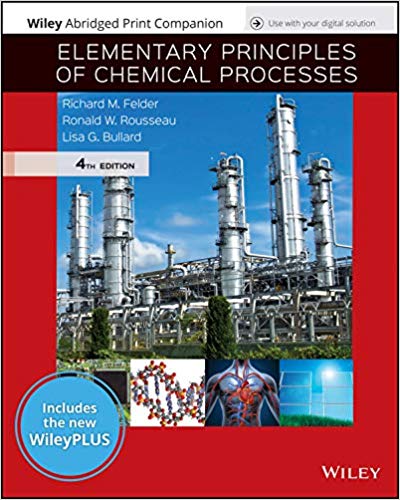A genetically engineered strain of Escherichia coli (E. coli) is used to synthesize human insulin for people
Question:
A genetically engineered strain of Escherichia coli (E. coli) is used to synthesize human insulin for people suffering from type I diabetes mellitus. In the following simplified reaction scheme, bacteria consume all of the limiting reactant under aerobic conditions and produce insulin and biomass.
![]()
Feed containing 150mM glucose (that is, 150 × 10–3 mol C6H12O6/L) and 50mM ammonia enters a bioreactor at a rate of 100 L/h. Pure oxygen enters the reactor as a gas at the same molar flow rate as the ammonia. The product stream leaves at a rate of 100 L/h. The respiratory quotient (see Problem 4.62) RQ = 0:50 mol CO2 produced/mol O2 consumed, and the molar ratio of biomass to insulin produced in the reaction is 1.5. The system operates at steady state.
(a) Determine the six stoichiometric coefficients and the limiting reactant.
(b) What are the fractional conversion of glucose and the production rates (g/h) of insulin and biomass?
Step by Step Answer:

Elementary Principles of Chemical Processes
ISBN: 978-1119498759
4th edition
Authors: Richard M. Felder, Ronald W. Rousseau, Lisa G. Bullard





